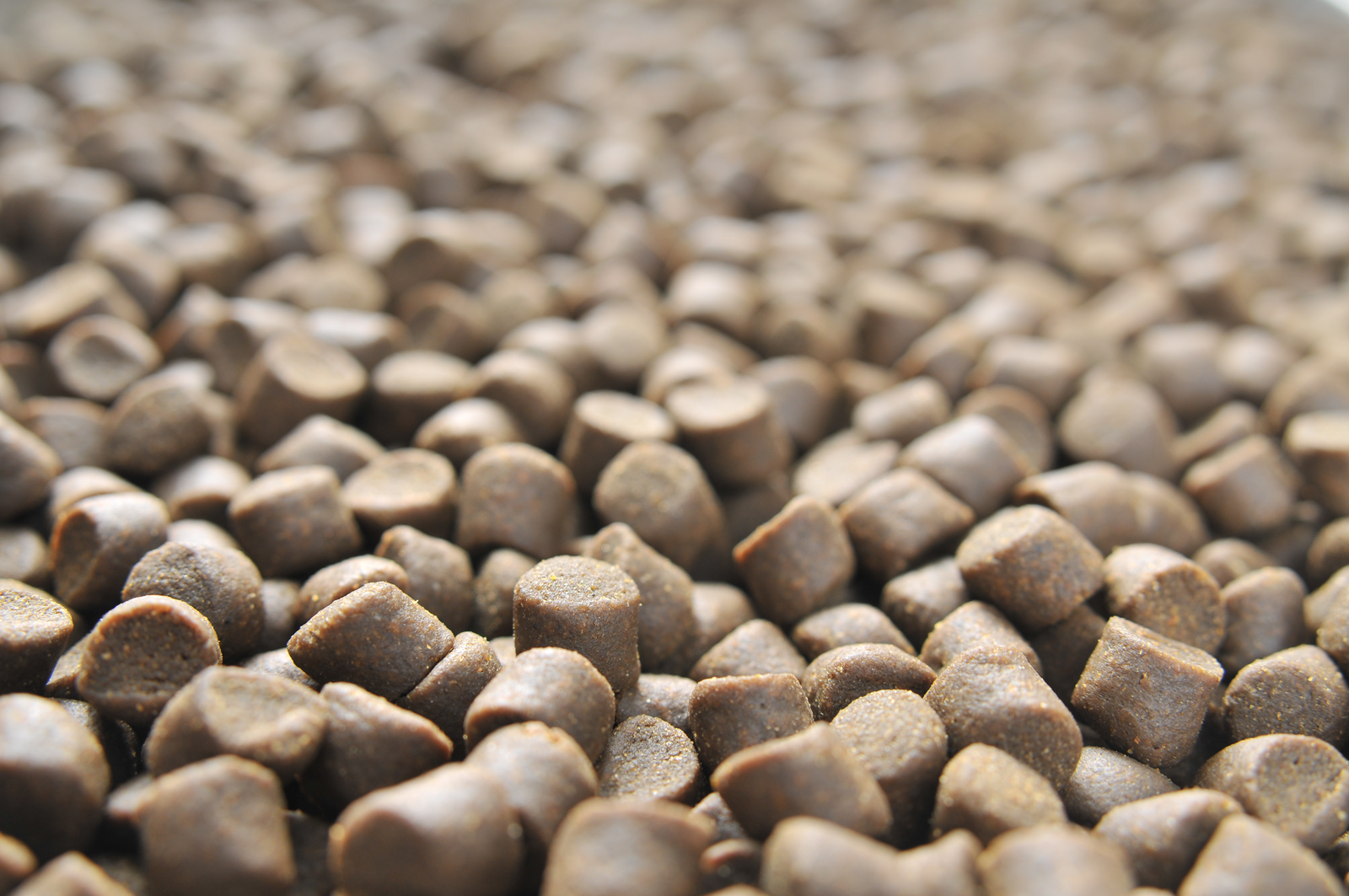Effects of extruder die temperature on fish pellets

A study was carried to investigate the effects of starch source (taro and broken rice) and extrusion die temperature (125, 140, 155 and 170 °C) on the physical properties of extruded fish pellets. The result showed that taro and broken rice starch used in the different diets have significant effects on most of the physical properties of the extruded pellets except for the moisture content and floatability.
What is extrusion?
Extrusion is a high temperature and short time (HTST) food and feed processing technique widely used in several industries. Extrusion cooking can be best described as a process of moistened starchy and proteinaceous materials are cooked and worked into viscous, plastic-like dough. During this process cooking the raw ingredients may undergo many chemical and structural changes. Furthermore, extrusion cooking is a very complicated process that product quality is highly variable depending on the type of extruder, screw speed and configuration, temperature profile on the barrel, die profile, feed rate and feed moisture (Mercier, 1977, Chinnaswamy and Hanna, 1988).
Pellet durability, expansion ratio and water absorption analysed
The blends containing taro or broken rice starch were extruded using a single screw extruder and the three zones of the barrel temperature profile were set constant at 70, 90 and 100 °C. Moisture content, expansion ratio, bulk density, floatability, pellet durability index, water absorption and solubility indices were extensively analysed.
Results show taro and broken rice starch in fish diets are a good source of starch in fish pellets
The results elucidated significant effects on the physical properties of the extruded pellets during the increase of die temperature and also change of starch source from taro to broken rice. The highest ER, PDI, WAI was noted in the fish diet containing broken rice starch compared to diet containing taro starch. Increase of die temperature from 125 to 170 °C has significant effects on physical properties of the extruded pellets containing taro and broken rice starch. The MC, ER, F, PDI and WAI values significant increased by 7.0, 3.5, 103.6, 0.1 and 13.5%, respectively, as the die temperature was increased from 125 to 170 °C. In contrast, there was a significant decrease in BD and WSI values by 9.4 and 12.2%, respectively, as the die temperature elevated from 125 to 170 °C.
Source: Animal Feed Science and Technology
You can read the full article here, Effects of extruder die temperature on the physical properties of extruded fish pellets containing taro and broken rice starch
Authors: C.R. de Cruz, M.S. Kamarudin,C.R. Saad, E. Ramezani-Fard











